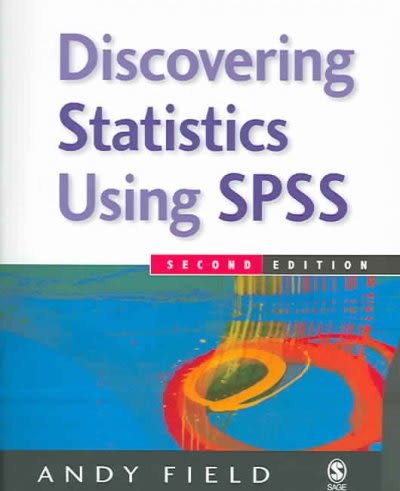Task 2: In the previous chapter we came across the beer-goggles effect: a severe perceptual distortion after
Question:
Task 2: In the previous chapter we came across the beer-goggles effect: a severe perceptual distortion after imbibing vast quantities of alcohol. The specific visual dis- tortion is that previously unattractive people suddenly become the hottest thing since Spicy Gonzalez's extra-hot tabasco-marinated chillies. In short, one minute you're standing in a zoo admiring the orang-utans, and the next you're wondering why some- one would put Gail Porter (or whatever her surname is now) into a cage. Anyway, in that chapter, a blatantly fabricated data set demonstrated that the beer-goggles effect was much stronger for men than women, and took effect only after 2 pints. Imagine we wanted to follow up this finding to look at what factors mediate the beer-goggles effect. Specifically, we thought that the beer-goggles effect might be made worse by the fact that it usually occurs in clubs which have dim lighting. We took a sample of 26 men (because the effect is stronger in men) and gave them various doses of alcohol over four different weeks (0 pints, 2 pints, 4 pints and 6 pints of lager). This is our first independent variable, which we'll call alcohol consumption, and it has four levels. Each week (and, therefore, in each state of drunkenness) participants were asked to select a mate in a normal club (that had dim lighting) and then select a second mate in a specially designed club that had bright lighting. As such, the second independent variable was whether the club had dim or bright lighting. The outcome measure was the attractiveness of each mate as assessed by a panel of independent judges. To recap, all participants took part in all levels of the alcohol consumption variable, and selected mates in both brightly and dimly lit clubs. The data are in the file BeerGogglesLighting.sav; analyse them with a two-way repeated-measures ANOVA.
Step by Step Answer:







